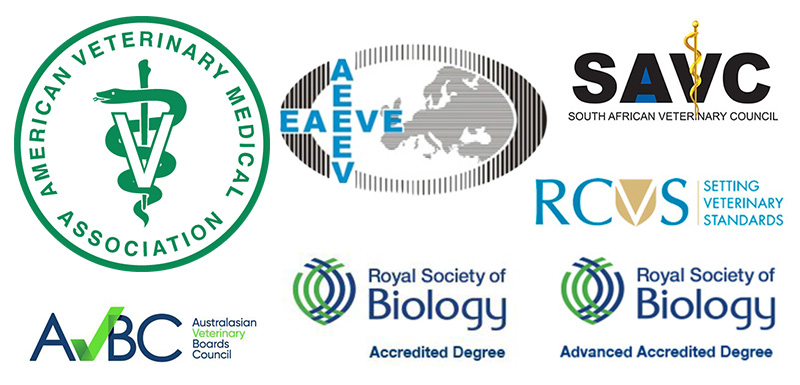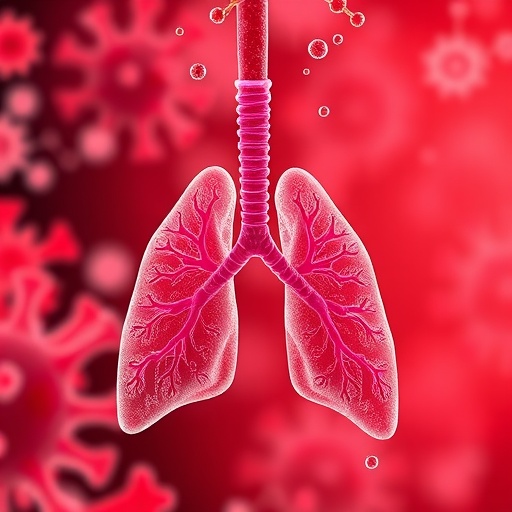AAHA One Health guidelines aim to bridge human, veterinary medicine – American Veterinary Medical Association

Report on the American Animal Hospital Association’s One Health Guidelines and Alignment with Sustainable Development Goals
Introduction: A New Framework for Integrated Health
The American Animal Hospital Association (AAHA) has released the “2025 AAHA One Health Guidelines: Navigating Cross-Disciplinary Partnerships,” establishing a comprehensive framework for integrating human and veterinary clinical care. This initiative represents a critical advancement in operationalizing the One Health concept, which is fundamental to achieving several Sustainable Development Goals (SDGs) by recognizing the interconnectedness of human, animal, and environmental health.
Core Objectives and Contribution to SDG 3 (Good Health and Well-being)
The primary objective of the guidelines is to bridge the enduring gap between human and veterinary medicine, thereby promoting holistic health outcomes for all. This directly supports SDG 3 by enhancing the quality and accessibility of care. The framework aims to:
- Establish a family-centered clinical practice that recognizes the human-animal bond as a key component of well-being.
- Improve the detection and management of zoonotic diseases, such as tickborne illnesses, safeguarding community health.
- Provide integrated support for complex health challenges, including declining cognitive health in older adults and their companion animals.
- Foster a more connected, effective, and comprehensive model of care that improves health-seeking behaviors and engagement in preventative medicine.
Fostering Partnerships for the Goals (SDG 17)
A central tenet of the guidelines is the promotion of interprofessional collaboration, a principle that lies at the heart of SDG 17. The document provides a structured approach for building these essential partnerships. The five core sections of the guidelines are designed to create a functional, collaborative system:
- Standardized terms and definitions: Establishes a common language to facilitate effective communication across diverse medical and public health disciplines.
- Family-centered system: Proposes a solution to the traditionally siloed nature of healthcare by treating the family unit, including pets, as a single entity for care.
- Grounding principles: Defines a system built on interprofessional teamwork, collaborative communication, and a balance of professional ethics and stakeholder interests.
- Roadmap: Offers step-by-step guidance for communication and collaboration between human and veterinary medical professionals.
- Case scenarios: Provides practical examples of how the One Health approach can be applied in real-world situations.
Addressing Social Equity and Vulnerable Communities (SDG 5, SDG 10, & SDG 16)
The One Health model is a powerful tool for reducing inequalities (SDG 10) by improving healthcare access for marginalized populations. A study of the One Health Clinic in Seattle demonstrated that an integrated approach is a “feasible and acceptable model of care” for young adults experiencing homelessness and their pets. Furthermore, the guidelines explicitly address the intersection of animal abuse and interpersonal violence, a critical issue that aligns with SDG 5 (Gender Equality) and SDG 16 (Peace, Justice, and Strong Institutions). By creating a system where veterinary professionals can identify and act on signs of abuse, the framework helps build safer and more inclusive communities.
Conclusion: A Collaborative Future for Global Health
The AAHA One Health Guidelines mark a significant step toward embedding collaborative principles into the fabric of clinical practice. By treating the family unit as the focal point of care, this approach not only improves health outcomes but also strengthens the implementation of the Sustainable Development Goals. As stated by AAHA’s leadership, the future of medicine is collaboration, viewing the family unit from multiple perspectives to provide comprehensive support. This initiative provides an actionable roadmap for building the resilient, equitable, and integrated health systems envisioned by the 2030 Agenda for Sustainable Development.
Identified Sustainable Development Goals (SDGs)
-
SDG 3: Good Health and Well-being
The article’s central theme is the “One Health” approach, which integrates human and veterinary medicine to improve health outcomes for all. It directly addresses health issues such as zoonotic diseases (“tickborne disease”), non-communicable diseases (“declining cognitive health in an older adult”), and access to care for vulnerable populations (“young adults experiencing homelessness and their pets”).
-
SDG 16: Peace, Justice and Strong Institutions
The article mentions that the One Health guidelines include case scenarios and support for “humans and animals impacted by partner violence or animal abuse.” This connects to the goal of reducing violence and protecting vulnerable individuals by creating systems that can identify and respond to abuse.
-
SDG 17: Partnerships for the Goals
The entire initiative described in the article is built on partnership. The “2025 AAHA One Health Guidelines: Navigating Cross-Disciplinary Partnerships” explicitly aims to “bridge that divide” between human and veterinary medicine through “true interprofessional collaboration.” The creation of the guidelines by a task force of experts and the mention of the “North America One Health University Network” are prime examples of multi-stakeholder partnerships in action.
Specific SDG Targets Identified
-
Target 3.3: End epidemics of communicable diseases
The article highlights that the One Health guidelines help veterinary professionals serve as “the frontline detector of a potential zoonoses” and includes a case scenario of a “tickborne disease impacting a family.” This directly relates to combating communicable diseases, particularly those that can be transmitted between animals and humans.
-
Target 3.4: Reduce mortality from non-communicable diseases and promote mental health
One of the case scenarios mentioned in the guidelines is “declining cognitive health in an older adult owner.” This shows a focus on integrated care that addresses non-communicable conditions and promotes well-being within a family unit, aligning with the goal of promoting mental and physical health.
-
Target 3.8: Achieve universal health coverage
The article references a study on the “One Health Clinic” for “young adults experiencing homelessness and their pets.” The study concluded that this integrated model improved “health-seeking behaviors, and engagement in preventative, therapeutic, and follow-up care,” which is a core component of providing access to quality essential health-care services for vulnerable populations.
-
Target 16.1: Significantly reduce all forms of violence
The guidelines are designed to help professionals navigate safety when “faced with animal abuse and interpersonal violence.” By providing a framework for identifying and supporting “humans and animals impacted by partner violence,” the initiative contributes to the broader goal of reducing all forms of violence.
-
Target 17.17: Encourage and promote effective partnerships
The article is fundamentally about creating effective partnerships. The development of the “2025 AAHA One Health Guidelines” by a “task force of experts across public health and human and veterinary medicine” is a direct example of a civil society and professional partnership designed to share knowledge and improve service delivery, as encouraged by this target.
Indicators for Measuring Progress
-
Indicator for Target 3.3:
The article implies an indicator related to the early detection of diseases. Progress could be measured by the rate of detection and reporting of potential zoonotic diseases (e.g., tickborne diseases) by veterinary professionals using the One Health framework.
-
Indicator for Target 3.8:
The study on the One Health Clinic provides a direct indicator. Progress can be measured by tracking increased engagement in preventative, therapeutic, and follow-up care among vulnerable populations served by integrated human-animal health clinics.
-
Indicator for Target 16.1:
The guidelines’ focus on violence suggests an indicator. Progress could be measured by the number of cases of interpersonal violence and animal abuse identified and referred for support through veterinary practices applying the One Health guidelines.
-
Indicator for Target 17.17:
The existence of the guidelines themselves is an indicator of a successful partnership. Progress can be measured by the number of veterinary and human medical practices that formally adopt and implement the AAHA One Health Guidelines, demonstrating the uptake of this collaborative framework.
SDGs, Targets, and Indicators Analysis
| SDGs | Targets | Indicators |
|---|---|---|
| SDG 3: Good Health and Well-being | Target 3.3: End epidemics of communicable diseases. | Rate of detection and reporting of potential zoonotic diseases (e.g., tickborne diseases) through integrated health systems. |
| SDG 3: Good Health and Well-being | Target 3.8: Achieve universal health coverage. | Increased engagement in preventative, therapeutic, and follow-up care among vulnerable populations (e.g., young adults experiencing homelessness). |
| SDG 16: Peace, Justice and Strong Institutions | Target 16.1: Significantly reduce all forms of violence. | Number of cases of interpersonal violence and animal abuse identified and referred for support through veterinary practices. |
| SDG 17: Partnerships for the Goals | Target 17.17: Encourage and promote effective partnerships. | Number of veterinary and human medical practices that formally adopt and implement the AAHA One Health Guidelines. |
Source: avma.org

What is Your Reaction?
 Like
0
Like
0
 Dislike
0
Dislike
0
 Love
0
Love
0
 Funny
0
Funny
0
 Angry
0
Angry
0
 Sad
0
Sad
0
 Wow
0
Wow
0



















































.jpg.webp?itok=0ZsAnae9#)

















:focal(1500,1000)/https://media.globalcitizen.org/a6/9a/a69a4720-d8a1-4715-b596-18738d03c05c/rotary_polio_hero_image.jpg?#)







